Vape Detective: Investigating CBD Vape Pen Ingredients
What's Really Inside Your CBD Vape Pen?
Looking for a quick breakdown of CBD vape pen ingredients? Here's what you'll typically find in quality products:
| Ingredient | Purpose | Safety Considerations |
|---|---|---|
| CBD Extract (300-1500mg) | Active therapeutic compound | Choose full spectrum, broad spectrum, or isolate based on preference |
| Carrier Liquid | Allows CBD to be vaporized | PG/VG (common), MCT oil (controversial), or "no-cut" distillate (safest) |
| Terpenes (5-10%) | Flavor and improved effects | Natural terpenes preferred over artificial flavors |
| Hardware Components | Heating and delivery system | Glass/ceramic elements safer than metal coils |
CBD vape pen ingredients vary widely across brands, making it essential to understand what you're inhaling. Unlike CBD tinctures meant for oral consumption, vape formulations require specific ingredients designed to be heated and inhaled safely. The recent surge in CBD vaping's popularity stems from its convenience and rapid absorption—delivering effects within minutes rather than the hour it might take with edibles or oils.
When vapor is inhaled, CBD enters your bloodstream through your lungs, bypassing the digestive system entirely. This direct route means higher bioavailability, with users typically getting about 1-2mg of CBD per puff from a standard vape pen.
But not all ingredients belong in your lungs. While the FDA classifies many vape ingredients as "GRAS" (Generally Recognized As Safe) for ingestion, the safety profile changes dramatically when these compounds are heated and inhaled. This is why understanding the complete ingredient list is crucial for your health.
I'm Max Shemesh, founder of Aventus8, where we've spent years analyzing CBD vape pen ingredients to develop products that prioritize both efficacy and safety in the fast-evolving hemp market. My experience has taught me that transparency in ingredient sourcing and third-party testing are non-negotiable when it comes to vape products.
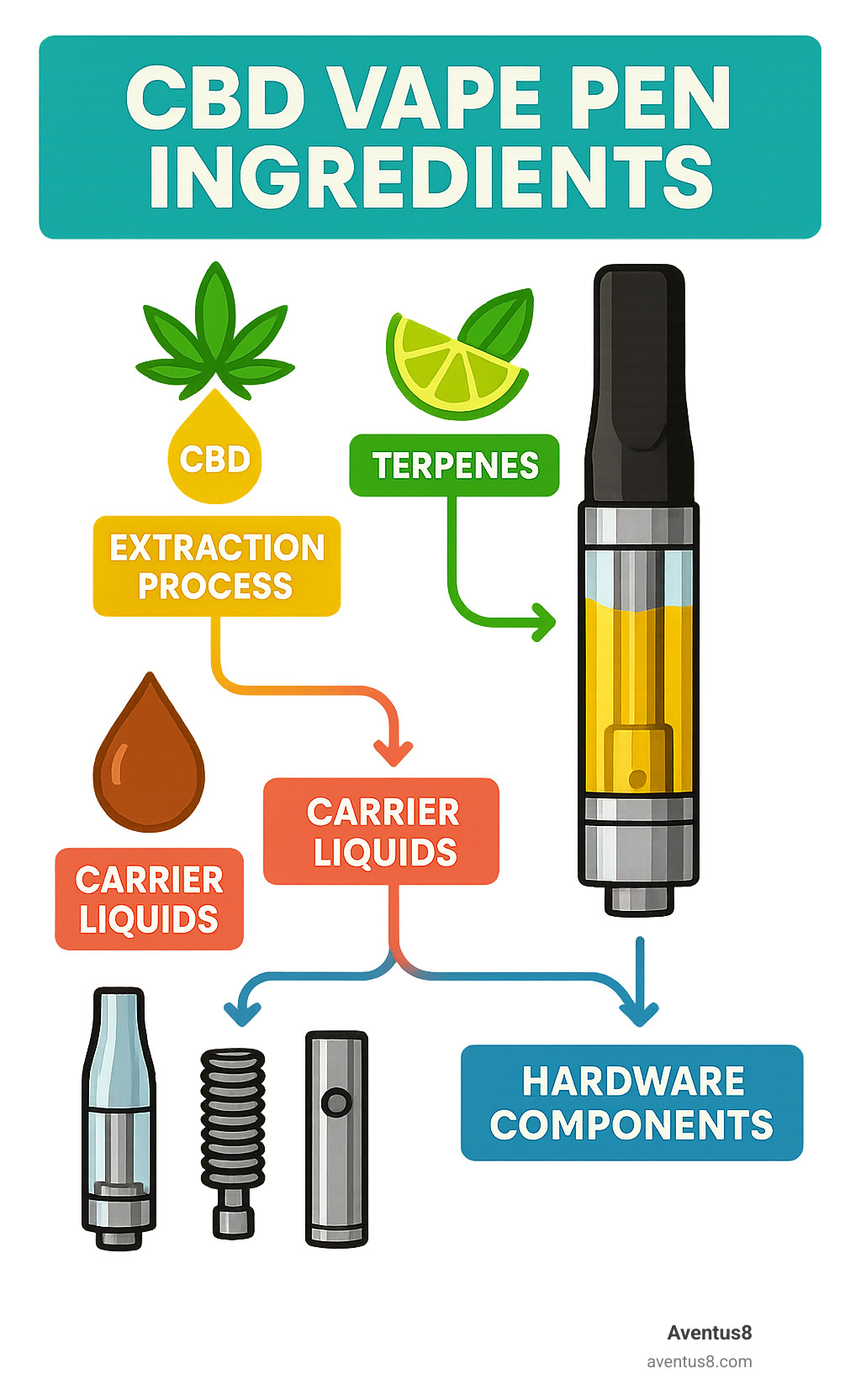
Quick CBD vape pen ingredients definitions: - CBD vape pen safety - CBD vape pen flavors - CBD vape pen benefits
What's Actually in Your Vape? The Core Cocktail
Ever wondered what's really inside that sleek little CBD vape pen you're enjoying? It's not just CBD in there—it's actually a carefully crafted mixture of several key components working together. Let's pull back the curtain on these CBD vape pen ingredients and see what's really creating those satisfying clouds:
The typical CBD vape pen contains a blend of hemp-derived CBD extract (the star of the show), carrier liquids (the supporting actors), aromatic terpenes, flavorings for taste, and the hardware components that bring it all together. When you take a puff from a cartridge containing 100mg of CBD, you're typically getting about 1-2mg of CBD per inhale—one reason why vaping offers such precise dosing for people seeking consistent results.
CBD Extract Types: Full Spectrum, Broad Spectrum, Isolate
The type of CBD extract in your vape pen makes a huge difference in both effects and legal status. Think of it as choosing between coffee options—each has caffeine, but the experience varies widely!
With full spectrum CBD, you're getting the whole plant experience—all cannabinoids naturally found in hemp, including that trace amount of THC (0.3% or less). This creates what experts call the "entourage effect," where all these compounds work together like a well-rehearsed orchestra. The downside? That tiny bit of THC might trigger a positive drug test for some people.
Broad spectrum CBD offers a middle ground—multiple beneficial cannabinoids like CBG, CBN, and CBC, but with THC specifically removed. You still get much of the entourage effect without the THC concerns. It's perfect if you want the benefits of multiple cannabinoids but need to avoid THC entirely.
For the purists, there's CBD isolate—the CBD molecule all by itself (99%+ pure). No entourage effect, but incredibly consistent and predictable results with zero risk of THC exposure. Many people appreciate this simplicity and reliability.
Most vape pens on the market contain between 300mg and 1500mg of CBD per device, with broad spectrum and isolate formulations being the most popular choices due to their minimal THC content.
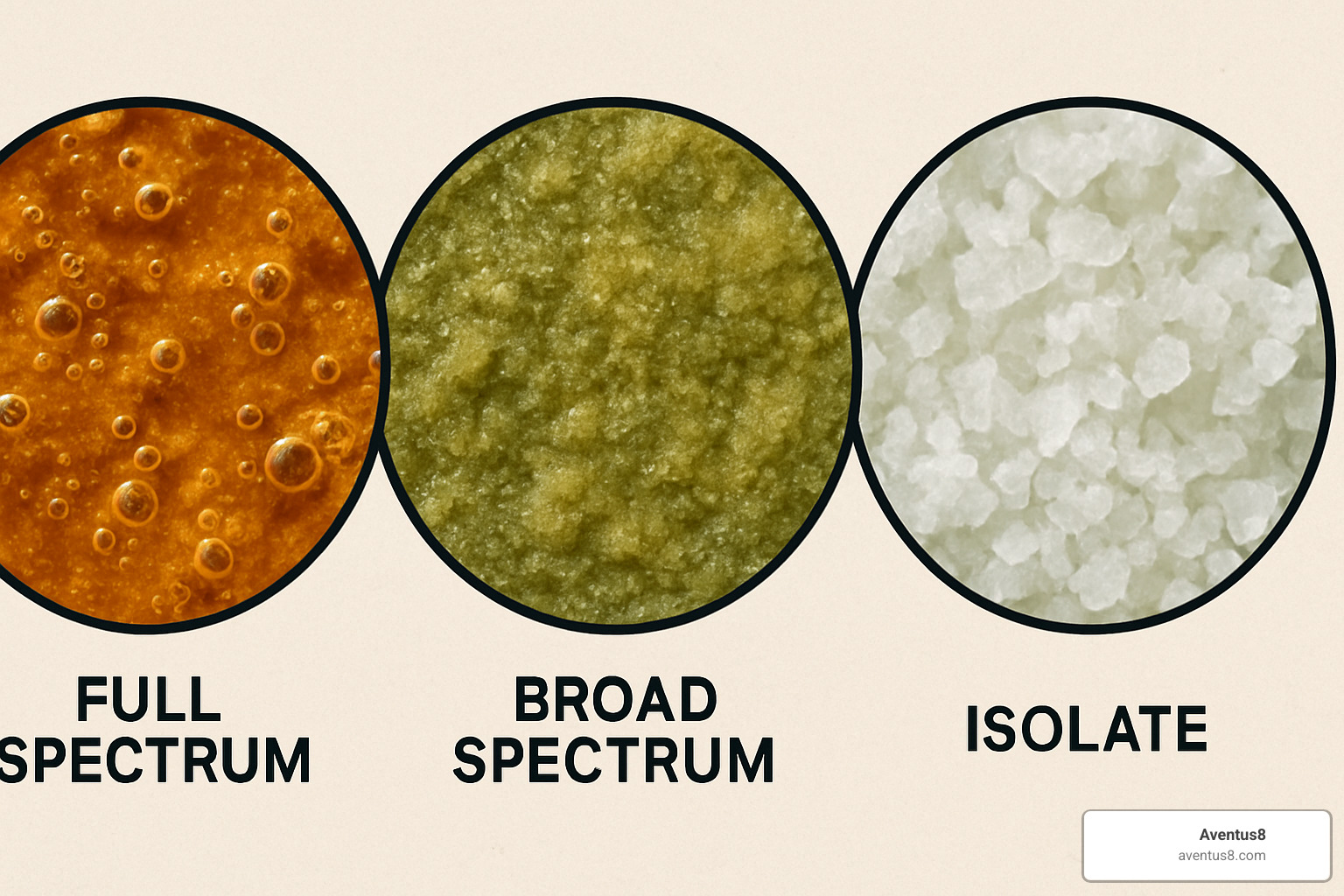
Carrier Liquids 101 – PG, VG, MCT & Beyond
Now for the controversial part of CBD vape pen ingredients—the carrier liquids. These are necessary to dilute thick CBD extract into something that can actually be vaporized, but each option comes with tradeoffs.
Propylene Glycol (PG) is a thin, almost tasteless liquid that carries flavor beautifully and delivers that satisfying "throat hit" similar to traditional smoking. The downside? When heated, PG can produce compounds like acetaldehyde and formaldehyde—not exactly what you want in your lungs. A 2010 study even found that airborne PG might trigger or worsen asthma and allergies in some people.
Vegetable Glycerin (VG) produces those impressive, billowy vapor clouds and has a slightly sweet taste. It's generally gentler on the throat than PG, but it can cause faster buildup of residue in your device and might leave your mouth feeling dry after extended use.
MCT Oil (derived from coconut or palm oil) is a bit controversial for inhalation. While it produces fewer harmful compounds when heated compared to PG, some studies suggest a potential risk of lipid pneumonia. Important note: this is NOT the same as regular oils, which should absolutely never be vaped.
The gold standard for health-conscious vapers is "No-Cut" Distillate—pure CBD distillate with terpenes only, no additional carrier liquids. Many experts consider this the safest option, though these formulations can sometimes crystallize at room temperature due to their high cannabinoid concentration.
More brands (including us at Aventus8) now offer CBD vape pens with no PG, VG, MCT, or other fillers—just pure broad-spectrum distillate and terpenes for those who prioritize clean ingredients.
Terpenes & Flavorings: Nature's Aroma Lab
The aromatic magic in your CBD vape comes from terpenes—natural compounds found in hemp and thousands of other plants. In CBD vape pen ingredients, terpenes do double duty:
First, they create those delicious flavors and aromas that make vaping enjoyable. Second, they may actually improve CBD's benefits through the entourage effect, creating a more well-rounded experience.
When you enjoy hints of earth, citrus, or pine in your CBD vape, you're likely experiencing myrcene (earthy, potentially relaxing), limonene (bright citrus notes that might lift your mood), or beta-caryophyllene (spicy, peppery, and unique because it also interacts with cannabinoid receptors). Other common terpenes include pinene (fresh pine scent that may improve alertness) and linalool (floral notes with possibly calming effects).
Terpenes typically make up about 5% of the total volume in a well-formulated CBD vape. They're often arranged in specific "strain profiles" meant to mimic the effects of popular cannabis strains like Blue Dream, Pineapple Express, or OG Kush—even though these hemp-derived products contain no marijuana.
Some manufacturers also add food-grade flavorings beyond terpenes. While these are generally safe for eating, the safety profile changes when heated and inhaled. That's why natural flavors from botanical sources are usually preferred over artificial ones for vaping products.
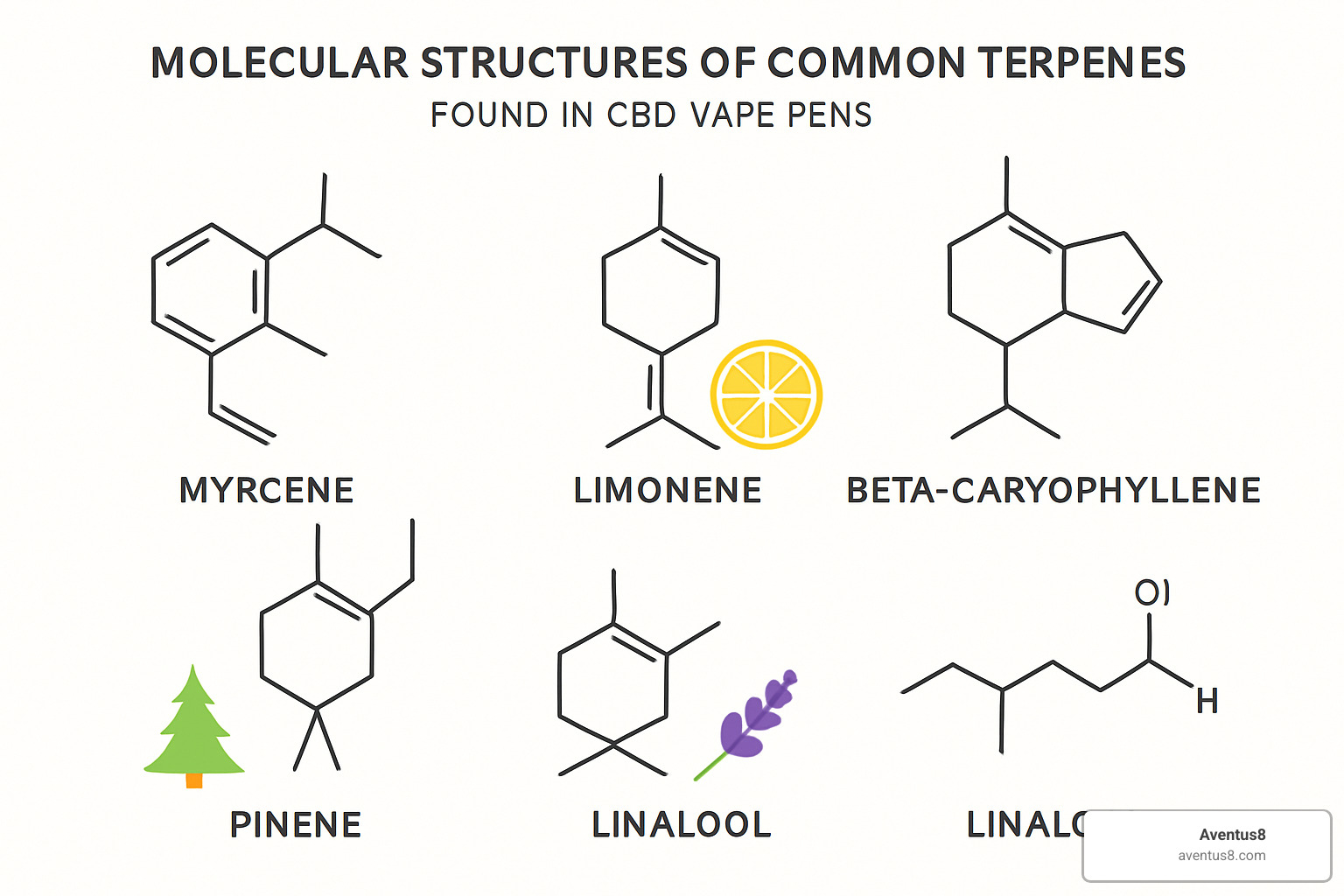
Decoding Safety: The Good, the Bad & the Ugly Additives
Let's have an honest chat about CBD vape pen ingredients and safety. I've seen too many people dive into vaping without understanding that inhaling something is very different from eating it. When you vape, those ingredients interact with your lungs directly—and that changes everything about safety.
The truth is, not everything that's safe in your cookies is safe in your vape pen. Here's what keeps me up at night when thinking about vape safety:
When propylene glycol heats up, it can create formaldehyde and acetaldehyde—yes, actual carcinogens. Yikes. Then there's the hardware itself—cheaper metals can leach heavy metals straight into your vapor. Some manufacturers (the not-so-great ones) add mysterious thinning agents that nobody's properly tested for inhalation. And let's not forget that hemp itself can bring pesticides, mold, or leftover solvents from extraction to the party.
This is exactly why I'm such a stickler for third-party lab testing. A proper test doesn't just confirm CBD content—it screens for all those nasty contaminants, solvents, and metals that have no business in your lungs.
Choosing CBD Vape Pen Ingredients Without PG/VG/MCT
If you're like me and prefer to err on the side of caution, you'll be happy to know there are cleaner options available:
Pure Distillate Vapes contain only CBD distillate and terpenes—nothing else. No cutting agents, no fillers. Just be aware they might crystallize when cold (a gentle warming fixes this). These typically need special hardware designed for thicker oils, but the peace of mind is worth it.
Terpene-Only Formulations use natural terpenes to thin the CBD extract instead of synthetic carriers. The flavor profile is usually more pronounced, though they might feel slightly harsher on your throat due to the concentrated terpenes.
There's also TEC Temper, a newer alternative made from specially formulated terpenes that act as a cutting agent. It generally outperforms traditional carriers in safety, maintains good consistency without crystallizing, and preserves those delicious flavor profiles better.
At Aventus8, we're pretty passionate about minimizing unnecessary additives. We focus on pure, high-quality extracts with as few carrier liquids as possible. It's not just safer—it gives you a more authentic hemp experience.
More info about CBD Vape Pen Safety
Harmful Additives to Avoid (and Why)
When I'm checking out CBD vape pen ingredients, these are my personal red flags:
Polyethylene Glycol (PEG) is a thinning agent that produces alarming levels of formaldehyde when heated. Most quality manufacturers have dropped it, but it still lurks in some cheaper products.
2019 vaping crisis? That was linked to Vitamin E Acetate, a thickening agent primarily used in illicit THC vapes. It should never appear in legitimate CBD products—period.
Those buttery flavors in some vapes might contain Diacetyl and Acetyl Propionyl. While they're fine in your food, when inhaled they've been linked to "popcorn lung" (bronchiolitis obliterans). Not something you want to mess with.
The MCT Oil debate continues in the industry. Some brands use it because it produces fewer harmful compounds than PG when heated, but it still carries theoretical risks of lipoid pneumonia. The jury's still out, but why take chances?
A particularly concerning study from 2010 found that airborne propylene glycol can trigger or worsen asthma, eczema, and various allergic symptoms, especially in children. This definitely raises questions about what happens with regular vaping over time.
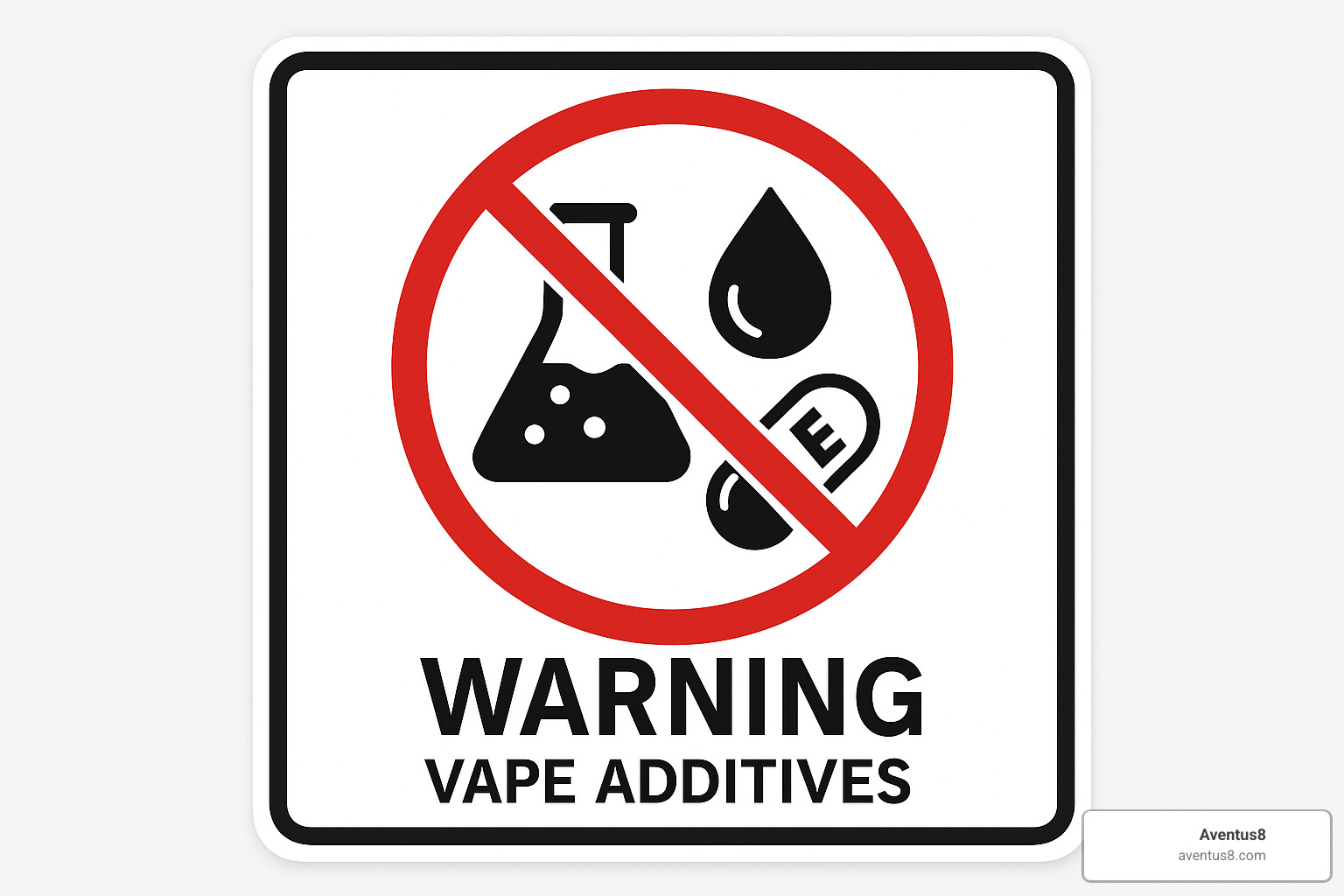
If you're curious about the science behind all this, there's some solid scientific research on heated propylene glycol worth checking out.
The bottom line? Your lungs deserve the cleanest ingredients possible. When it comes to what you're inhaling, being picky isn't just okay—it's essential.
How Ingredients Shape Your Vaping Experience & Potency
Ever wonder why some CBD vapes feel smooth while others make you cough? Or why some produce thick clouds while others barely show vapor? The secret lies in the CBD vape pen ingredients and how they work together to create your experience.
Think of your vape pen as a recipe—changing just one ingredient can completely transform what you taste, feel, and experience. Let's explore how these ingredients affect your vaping journey:
Flavor, Vapor & Smoothness Factors
That first inhale tells you a lot about what's inside your pen. If you feel a scratchy "throat hit," you're likely experiencing a high PG (propylene glycol) formula. These 70/30 PG/VG blends deliver sharper flavors but thinner vapor clouds.
On the flip side, higher VG (vegetable glycerin) formulations—like a 30/70 PG/VG ratio—produce those satisfying thick clouds while feeling gentler on your throat. Many users find a balanced 50/50 blend hits the sweet spot between flavor and smoothness.
The terpene percentage also dramatically affects your experience. A CBD vape with 7-10% terpenes will burst with flavor but might feel a bit harsh, while a milder 3-5% formula offers a smoother session with subtler taste notes. Some terpenes naturally create more sensation—pinene, for example, delivers that distinctive pine flavor with a noticeable throat feel.
Your hardware matters too. I've found ceramic coils consistently provide cleaner flavor than metal alternatives, while mesh heating elements distribute heat more evenly for a consistent experience. When you're using a pen with adjustable voltage, you're essentially controlling the temperature of your vapor—lower settings for flavor preservation, higher settings for bigger clouds.
The purity of your CBD distillate makes a surprising difference too. Those high-purity distillates create a clean, smooth vapor, while "raw" extracts with more plant material offer complex flavors but a rougher experience. This is why many premium brands use winterized extracts, which have had the waxes filtered out at cold temperatures for a silky-smooth inhale.
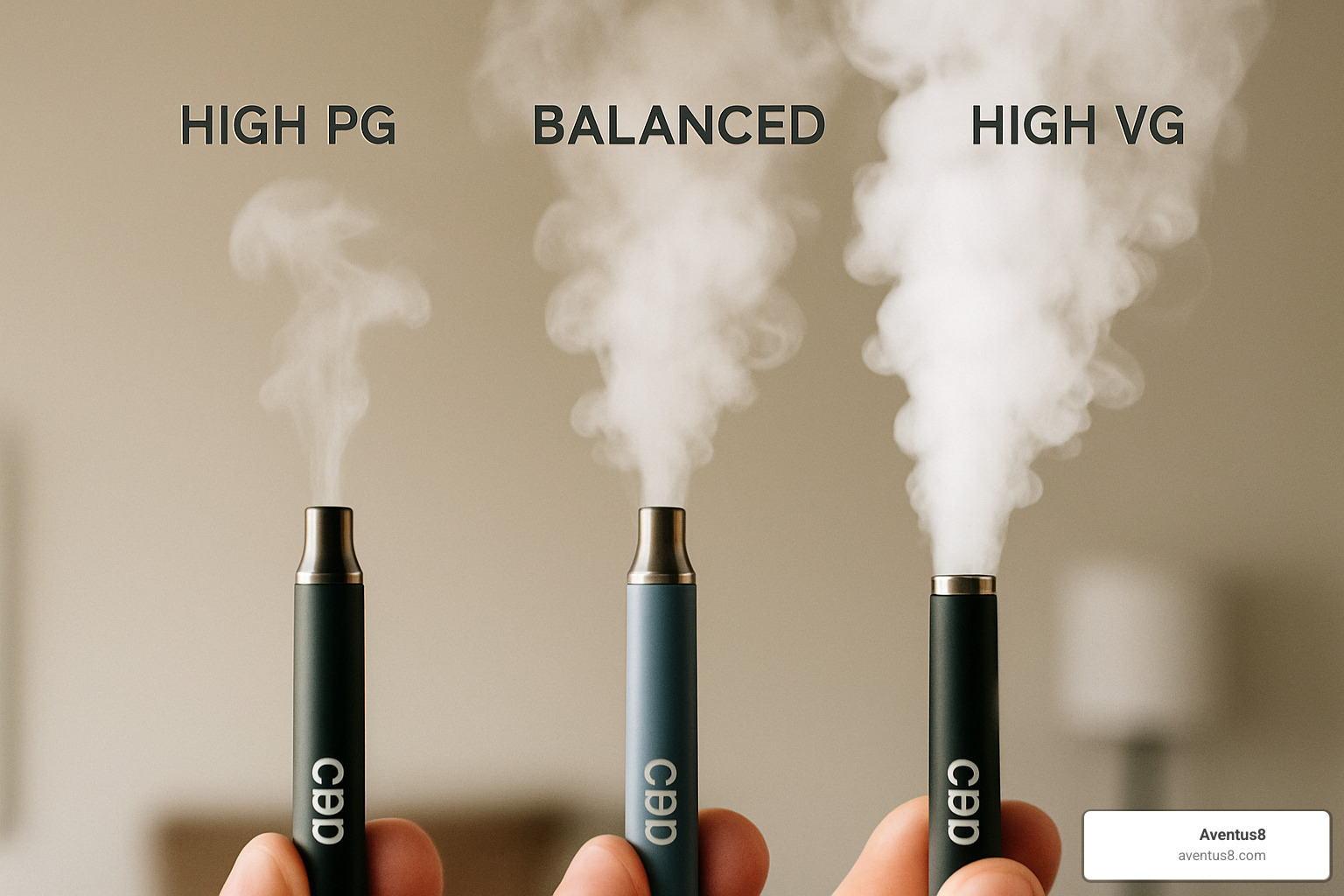
Bioavailability, Puff Counts & Milligrams Delivered
Understanding how much CBD you're actually getting per puff helps you dose effectively. When you vape CBD, you're getting approximately 30-40% bioavailability—significantly better than the 13-19% from oral consumption. This means more CBD actually reaches your bloodstream rather than being processed by your digestive system.
Most CBD vape pens deliver about 1-2mg of CBD per puff, but this varies by product. A simple way to estimate: if you have a 500mg CBD pen designed for 500 puffs, you're getting roughly 1mg per puff. With a higher-capacity 1500mg pen rated for 2500 puffs, each draw delivers about 0.6mg.
If you're new to CBD vaping, start slow. Take 1-2 puffs, then wait about 10 minutes to assess how you feel before taking more. Most people find their sweet spot between 5-15mg per session (roughly 5-15 puffs). The effects typically kick in within 1-3 minutes, peak around the 15-30 minute mark, and last for 2-3 hours—shorter than edibles but more immediate.
Some users take "maintenance puffs" every few hours to maintain their desired effect throughout the day. This approach works well because vaping allows for such precise, on-demand dosing.
Modern CBD vape pens range widely in capacity—from compact 300mg devices to substantial 1500mg pens. Some high-capacity disposables can deliver up to 6,000 puffs (containing 12mL e-liquid with 500mg CBD isolate), though these spread the CBD more thinly across more puffs.
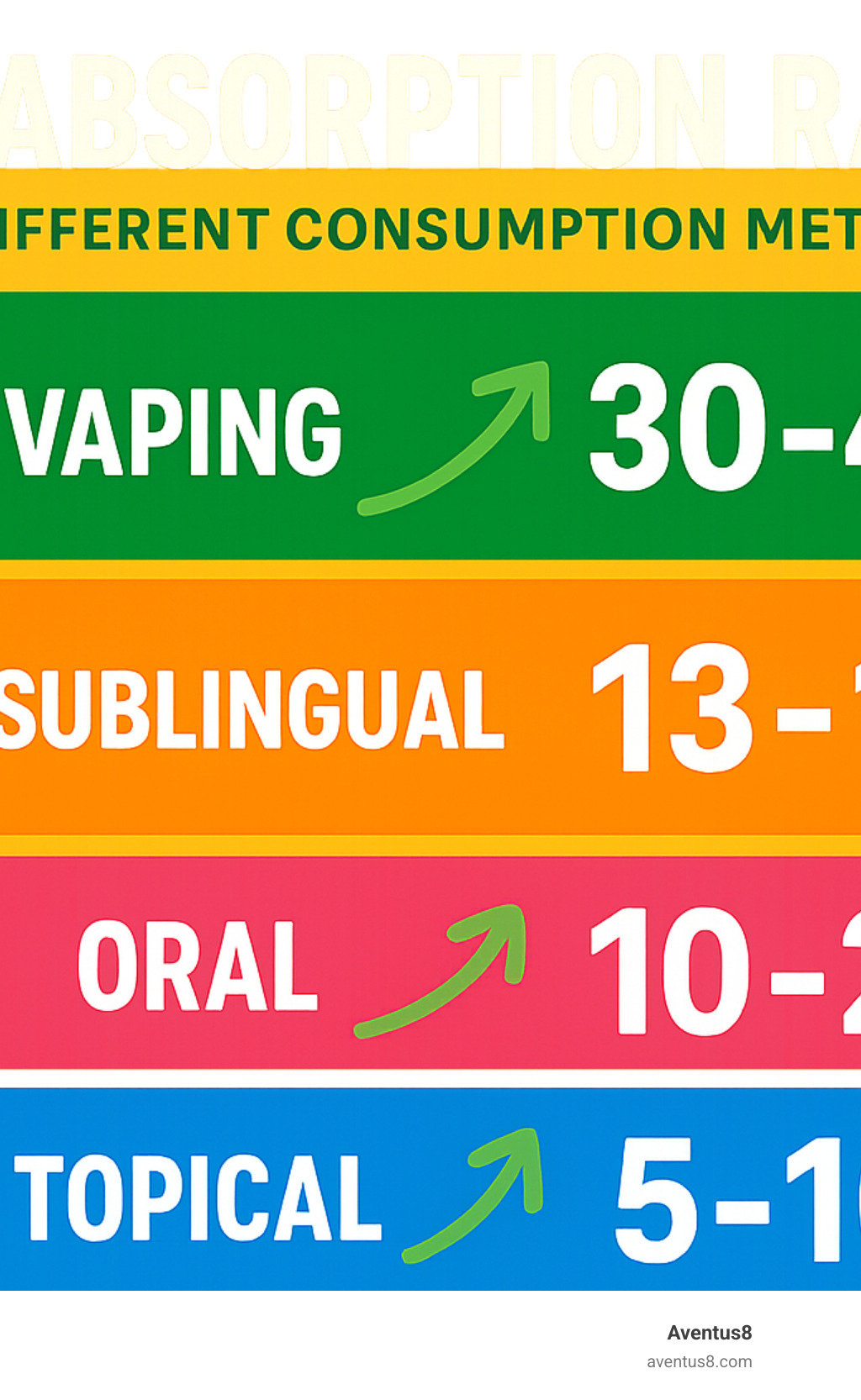
The beauty of vaping CBD is this precise control—you can adjust your intake puff by puff until you find exactly what works for your body. Unlike edibles where you're committed to the full dose once consumed, vaping lets you fine-tune in real time.
Want more detailed guidance on getting the most from your CBD vape experience? Check out our Vape Smart tips for everything from proper inhalation techniques to storage recommendations.
CBD Vape Pen Ingredients & Regulations You Need to Know
Navigating CBD vape pen ingredients can feel like trying to read a map in a foreign language. The rules are constantly changing, with different requirements popping up at federal and state levels. But understanding these regulations is crucial—both for staying on the right side of the law and for ensuring you're putting only quality products in your body.
The regulatory landscape might seem confusing, but I'll break it down into bite-sized pieces you can actually digest.
At the federal level, the 2018 Farm Bill was a game-changer. It legalized hemp-derived CBD containing less than 0.3% THC—meaning most CBD vape products you'll find are technically legal under federal law. But here's the catch: the FDA hasn't specifically approved CBD for inhalation. They're still playing catch-up with the rapidly evolving market.
Then there's the PACT Act, which threw another wrench into the works in 2021. This legislation classified all vaping products as "Electronic Nicotine Delivery Systems"—even those without nicotine like CBD vapes. The result? Stricter shipping regulations and age verification requirements. Many carriers now refuse to ship vape products directly to consumers, which is why finding a reliable supplier like Aventus8 has become more important than ever.
State laws add another layer of complexity. While most states have acceptd CBD, some have additional restrictions or even prohibit CBD vaping products entirely. It's always smart to check your local regulations before clicking "purchase"—or before packing your vape pen for a trip across state lines.
And of course, age restrictions apply. CBD vape pen ingredients might be plant-derived, but these products are still strictly for adults 21 and over. Valid ID verification isn't just a suggestion—it's a requirement.
At Aventus8, we steer this complex landscape so you don't have to. All our products comply with federal regulations and contain less than 0.3% THC, giving you peace of mind with every purchase.
Reading Labels & COAs: Trust but Verify
When it comes to CBD vape pen ingredients, I always tell people: "Trust, but verify." Pretty packaging and bold claims mean nothing without the lab results to back them up.
A good product label should tell you everything you need to know at a glance: total CBD content (in milligrams), expected puff count, a complete ingredient list, and whether you're getting full spectrum, broad spectrum, or isolate CBD. You should also find a batch or lot number for traceability, along with manufacturing and expiration dates.
But the real gold standard? The Certificate of Analysis, or COA. This document is your proof that what's on the label is actually what's in the product. A proper COA comes from an independent, third-party laboratory (not the manufacturer's in-house testing), and should match the batch number on your product.
When reviewing a COA, look for these key pieces of information: - Cannabinoid profile (verifying the CBD content matches the label) - THC content (must be ≤0.3% for legal hemp products) - Terpene profile (if applicable) - Safety testing for residual solvents, heavy metals, microbial contaminants, and pesticides
Be wary of red flags like vague terms ("hemp extract" without specifying CBD content), missing ingredient lists, no batch information, or exaggerated health claims. And if there's no way to access lab reports—either through a QR code or website link—that's a major warning sign.
The best brands in the industry now include QR codes that take you directly to the lab reports for your specific batch. This level of transparency isn't just nice to have—it's essential for knowing exactly what you're putting into your lungs.
More info about CBD Vape Pen Drawbacks
Legal THC Limits, Age Restrictions & Shipping Rules
Let's talk about the fine print that governs CBD vape pen ingredients—the rules that determine what's legal, who can buy it, and how it gets to your door.
THC limits are perhaps the most important regulatory factor. Federal law draws a clear line: hemp-derived CBD products must contain no more than 0.3% THC to be legal. That tiny amount won't get you high, but it's enough to potentially contribute to the entourage effect in full spectrum products. If you're concerned about THC exposure—perhaps due to drug testing or personal preference—broad spectrum and isolate products typically contain no detectable THC.
It's worth noting that some states have even stricter policies, with zero tolerance for any THC. And if you're across the pond in the UK, their legal limit is slightly lower at 0.2% THC.
Age verification isn't optional in this industry—it's mandatory. You must be 21 or older to purchase CBD vape products in most places. Online retailers use age verification systems to check your ID, while brick-and-mortar stores will ask to see proof of age before purchase. This isn't just about following rules; it's about responsible business practices.
Shipping has become increasingly complicated since the PACT Act took effect. Major carriers like USPS, FedEx, and UPS now have significant restrictions on vape products. Some states prohibit shipping vape products to residential addresses altogether. And if you're thinking about international shipping—well, that's generally a no-go for CBD vape products.
There's also the often-overlooked matter of disposal. Those convenient disposable vape pens contain batteries and electronic components that shouldn't end up in landfills. Many localities require proper e-waste recycling for these devices. Some forward-thinking manufacturers have even started offering recycling programs for used devices.
At Aventus8, we've adapted to these regulations while still making the purchasing process as smooth as possible. We offer free shipping on orders over $75 within the U.S., all while strictly following current shipping regulations. Our age verification procedures ensure our products only reach adult consumers who can make informed choices about their wellness journey.
Frequently Asked Questions about CBD Vape Pen Ingredients
Are CBD vape pen ingredients safe to inhale every day?
When it comes to daily use of CBD vape pen ingredients, we're still waiting for definitive long-term research. Many of us want simple answers about safety, but the truth has some nuance.
Quality matters enormously here. Products with minimal additives generally present lower risks, though any form of inhalation comes with some considerations for your respiratory health. The good news is that pure CBD itself appears to have a favorable safety profile when vaped.
If you're considering daily use, prioritize products free of propylene glycol, vegetable glycerin, MCT oil, vitamin E acetate, and other unnecessary additives. Your lungs will thank you! Also, devices with glass or ceramic heating elements tend to be safer options than those with metal coils that might leach heavy metals when heated.
For the safest experience, I recommend taking a thoughtful approach: choose products with minimal ingredients, always verify third-party lab testing (don't just take a company's word for it!), start with lower doses and frequency, and check with your healthcare provider if you have any respiratory conditions or concerns.
It's perfectly fine to take regular breaks to assess how your body responds. Many users find a balance that works for them without daily use.
Can I fail a drug test because of trace THC in my vape ingredients?
This is probably one of the most common questions we hear, and for good reason! The short answer is yes, it's possible, especially with full spectrum CBD vape pen ingredients.
Here's the situation: Full spectrum CBD products legally contain trace amounts of THC (≤0.3%). While this isn't enough to cause any intoxicating effects, with regular use, this small amount of THC can accumulate in your system. Standard workplace drug tests are looking specifically for THC metabolites, not CBD itself.
I've heard from customers who were surprised by positive test results despite using only legal CBD products. If you're subject to drug testing for work or other reasons, you'll want to take some precautions:
Choose broad spectrum or isolate products that contain no detectable THC, and always request to see the lab reports that verify zero THC content. Some users find it helpful to inform their employer about their CBD use preemptively, though I understand this isn't comfortable or practical for everyone.
One important caution: even products labeled "THC-free" might contain trace amounts below the lab's detection limit, so there's never a 100% guarantee if you're subject to very sensitive testing.
Why does my "uncut" cartridge sometimes crystallize?
Finding crystals in your cartridge? Don't worry - this is actually a good sign! Crystallization is completely normal in high-concentration, "uncut" CBD vape pen ingredients and isn't a quality concern at all.
Pure CBD naturally forms crystals at room temperature when it's highly concentrated. Without thinning agents like PG or VG (which many health-conscious users prefer to avoid), this crystallization becomes more likely. You might notice it happens more frequently when your cartridge experiences temperature changes, like being left in a cold car and then brought inside.
The crystallized product is still just as effective, but it won't vaporize properly until those crystals are dissolved back into the oil. Fortunately, fixing this is simple:
Gently warm the cartridge using a hair dryer on low setting (keep it at least 6 inches away), or place the cartridge in a sealed plastic bag and submerge it in warm (not hot) water for a few minutes. Once the crystals dissolve, your product should vape normally again.
To reduce future crystallization, try to store your cartridge at a consistent room temperature. But honestly, I see crystallization as reassurance that you've got a purer product without excessive fillers or thinning agents. It's the CBD equivalent of finding real vanilla beans in your ice cream!
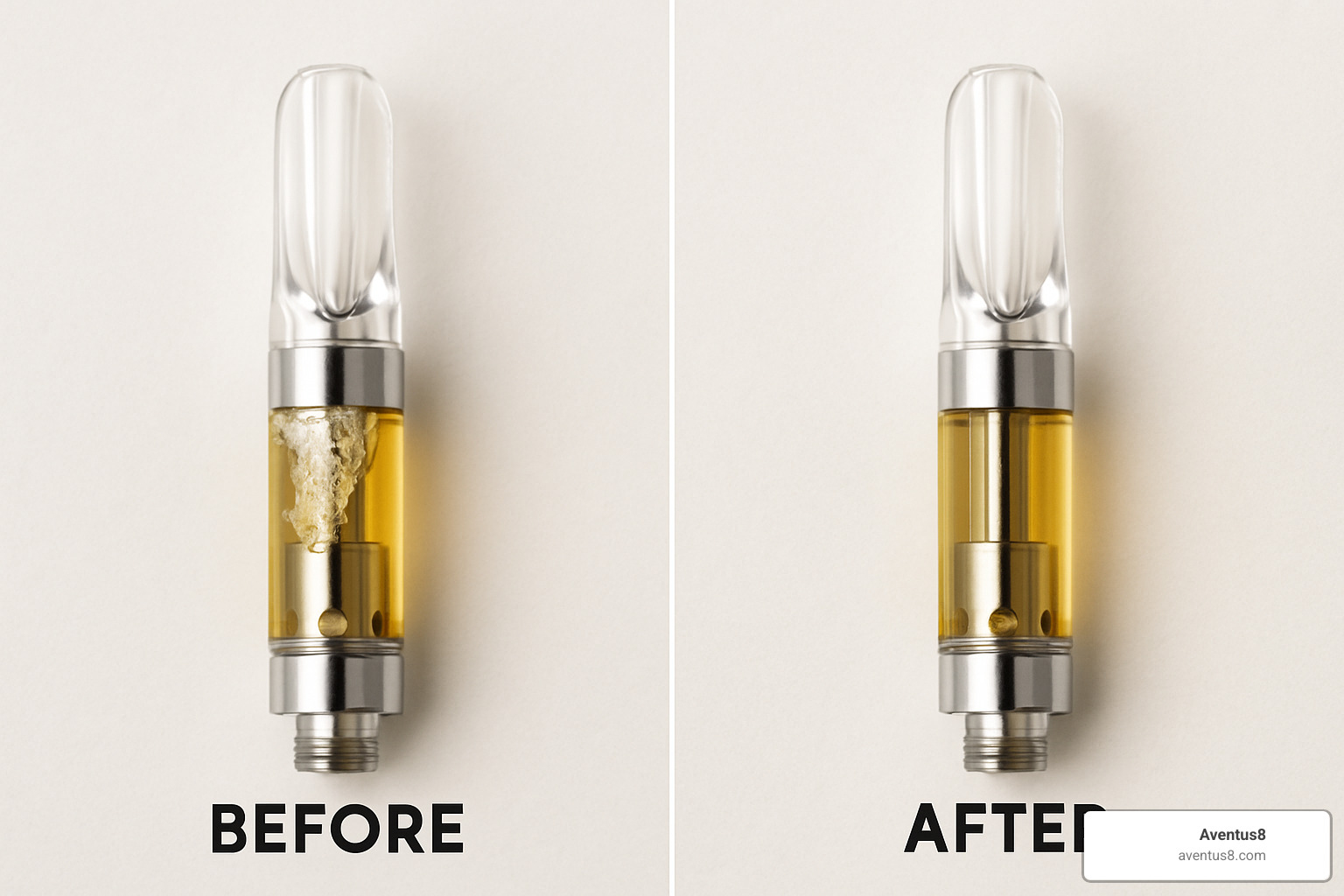
Conclusion
Understanding CBD vape pen ingredients is like learning what goes into your favorite recipe—once you know, you can make smarter choices about what you put in your body. Throughout this guide, we've seen that CBD vapes are more than just CBD; they're carefully crafted formulations where every component plays a crucial role in both safety and experience.
After diving deep into vape ingredients, here's what matters most: quality products don't hide what's inside them. The best CBD vape pens come with clear ingredient lists and comprehensive lab reports that verify exactly what you're inhaling. In this industry, transparency isn't just nice to have—it's essential.
I've found that simpler formulations generally offer a safer experience. Those "no-cut" or minimal-additive products might cost a bit more, but your lungs will thank you. Remember how we discussed crystallization? That's actually a good sign—it means your CBD is pure enough to form natural crystals rather than being diluted with questionable thinning agents.
Your choice between full spectrum, broad spectrum, or isolate extracts will significantly shape your experience. Full spectrum offers that complete entourage effect but contains trace THC, while isolate gives you pure CBD without the worry of THC exposure. It's a personal choice based on your needs and circumstances.
The carrier liquid debate continues to evolve, with PG, VG, MCT, and "no-cut" formulations each offering different benefits and considerations. The hardware matters too—glass and ceramic components generally present fewer contamination risks than metal parts that might leach unwanted elements when heated.
At Aventus8, we believe you deserve products that meet the highest standards. That's why all our vape offerings come with detailed lab testing and clear ingredient information. We're proud to offer free U.S. shipping on orders over $75, making quality CBD more accessible.
While vaping offers that quick relief many of us seek, it's worth remembering it's just one way to enjoy CBD's benefits. If you have concerns about inhalation, you might explore tinctures, edibles, or topicals—each with their own unique advantages.
Whether you're just starting your CBD journey or you're already well-versed in cannabinoids, I hope this guide helps you make more informed choices. After all, understanding what's in your vape pen empowers you to find products that deliver exactly what you want—safely, effectively, and enjoyably.
